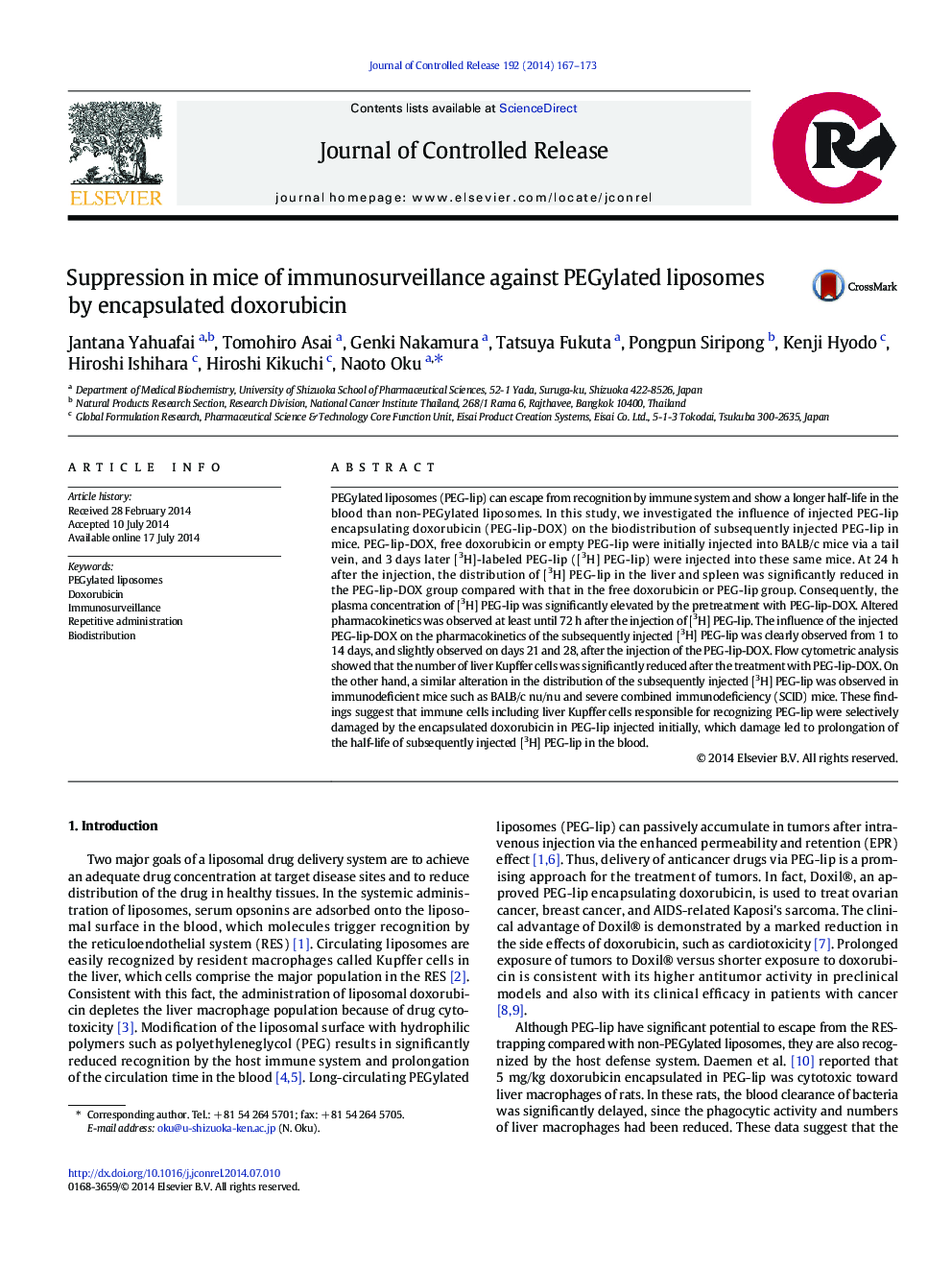| Article ID | Journal | Published Year | Pages | File Type |
|---|---|---|---|---|
| 1423917 | Journal of Controlled Release | 2014 | 7 Pages |
PEGylated liposomes (PEG-lip) can escape from recognition by immune system and show a longer half-life in the blood than non-PEGylated liposomes. In this study, we investigated the influence of injected PEG-lip encapsulating doxorubicin (PEG-lip-DOX) on the biodistribution of subsequently injected PEG-lip in mice. PEG-lip-DOX, free doxorubicin or empty PEG-lip were initially injected into BALB/c mice via a tail vein, and 3 days later [3H]-labeled PEG-lip ([3H] PEG-lip) were injected into these same mice. At 24 h after the injection, the distribution of [3H] PEG-lip in the liver and spleen was significantly reduced in the PEG-lip-DOX group compared with that in the free doxorubicin or PEG-lip group. Consequently, the plasma concentration of [3H] PEG-lip was significantly elevated by the pretreatment with PEG-lip-DOX. Altered pharmacokinetics was observed at least until 72 h after the injection of [3H] PEG-lip. The influence of the injected PEG-lip-DOX on the pharmacokinetics of the subsequently injected [3H] PEG-lip was clearly observed from 1 to 14 days, and slightly observed on days 21 and 28, after the injection of the PEG-lip-DOX. Flow cytometric analysis showed that the number of liver Kupffer cells was significantly reduced after the treatment with PEG-lip-DOX. On the other hand, a similar alteration in the distribution of the subsequently injected [3H] PEG-lip was observed in immunodeficient mice such as BALB/c nu/nu and severe combined immunodeficiency (SCID) mice. These findings suggest that immune cells including liver Kupffer cells responsible for recognizing PEG-lip were selectively damaged by the encapsulated doxorubicin in PEG-lip injected initially, which damage led to prolongation of the half-life of subsequently injected [3H] PEG-lip in the blood.
Graphical abstractFigure optionsDownload full-size imageDownload high-quality image (262 K)Download as PowerPoint slide
